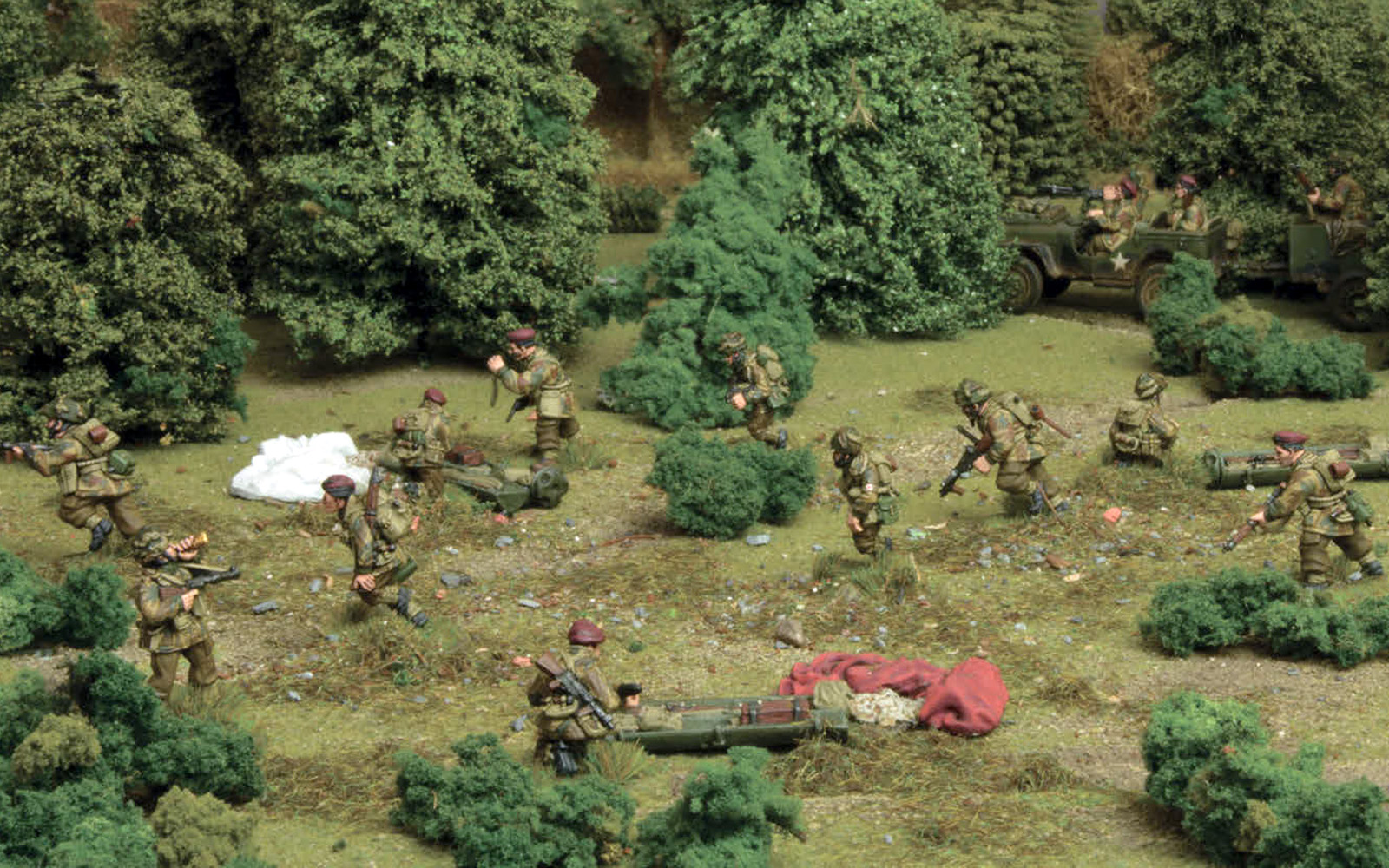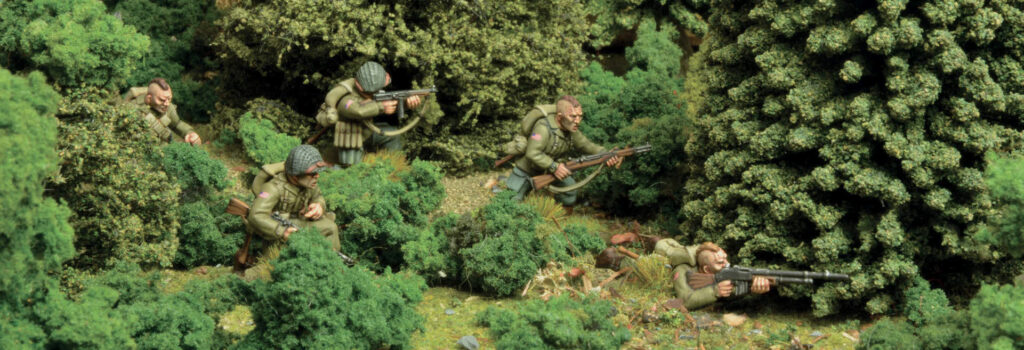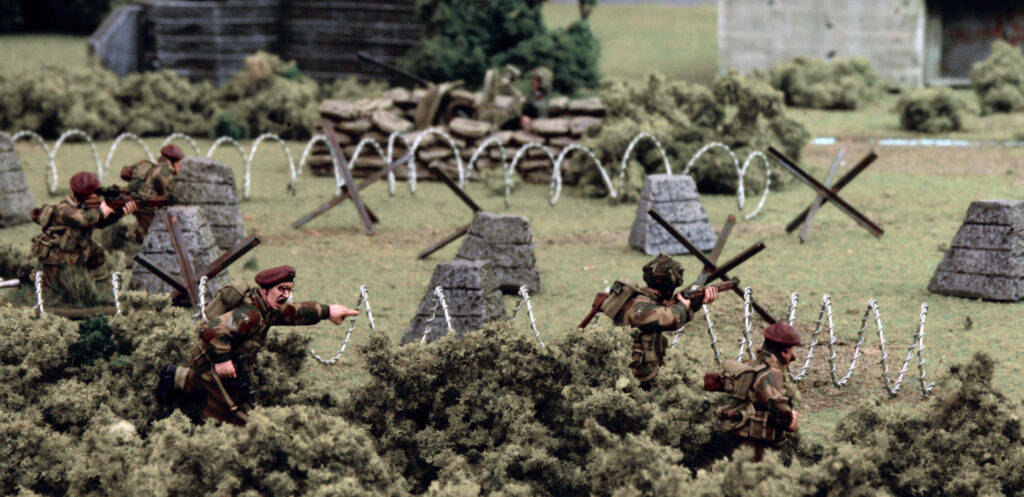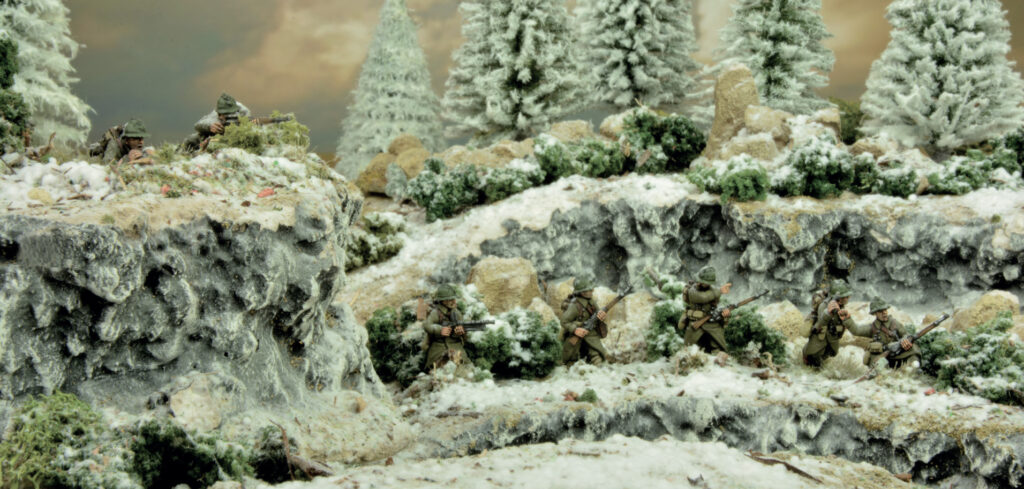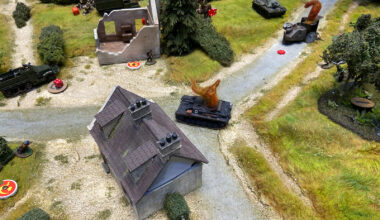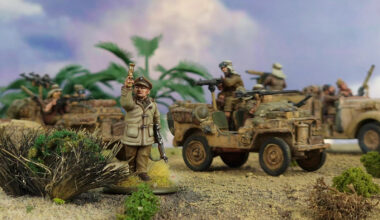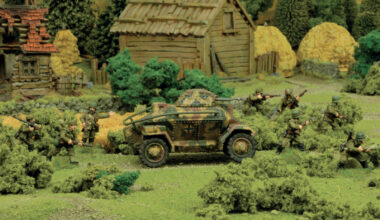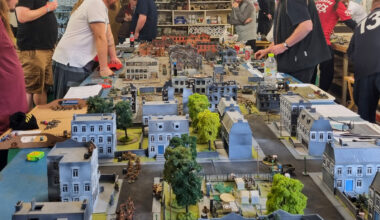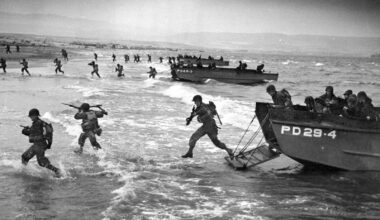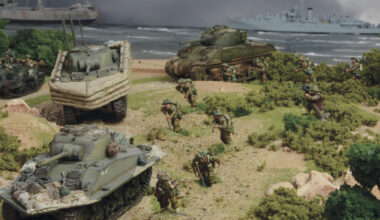Throughout the course of history, many battles have been decided by the timely arrival of reinforcements for one side or the other, or by the failure of promised troops to turn up; Blücher at Waterloo, the Winged Hussars at Vienna, XXX Corps in Holland – all crucial moments in military history. To quote Timur, founder of the eponymous Timurid Empire (who I suspect knew a thing or two about warfare), “It is better to be on hand with ten men than absent with ten thousand.” As in history, so on our tabletop battlefields. In games of Bolt Action, reinforcements can arrive late in the day, from unexpected quarters – this can be a powerful tool, but only when well-used. Let’s explore how to do just that!
First off, an understanding of the Reserves and Outflanking rules is required (these can be found in full on page 132 of your Bolt Action Second Edition rulebook). Put simply, provided the mission allows it, they give you the ability to bring your troops on at some point later in the game than the first turn, either from your own table edge or one of the sides. While it may initially seem disadvantageous to start the game with fewer units on the board, I’ve always found it to be a very useful trick to have up my sleeve, and often build in a capability for it when designing army lists. Let’s first look at the advantages and what we can do with them!
Firstly, and rather obviously, a unit that isn’t on the board can’t be damaged or destroyed. This can be particularly useful for units which your opponent might consider ‘high-threat’, or which can be very easily destroyed by long-range fire early in the game – a classic example of this might be a unit of Engineers with a flamethrower or a light vehicle without the Recce rule. By keeping vulnerable units off the table until they are needed, they aren’t overly exposed to enemy fire! You can use this period of safety to try and nullify the threats to them early on, or simply make sure you arrive well out of sight of them.
Similarly to the previous point, Outflanking with a unit that is otherwise rather slow on the tabletop is a great way to get it across the board – remember, the longer an Outflanking unit stays in reserve, the further into your opponent’s half you can deploy it when it arrives! No need for those body-armoured Soviet Assault Engineers to trudge up the board at 6” a turn, taking pins and casualties all the way – now they can pop out just where they’re needed, and blast away with SMGs and flamethrowers to their hearts’ content.
Finally, there’s the element of surprise to be exploited, most particularly when outflanking! As you pick your board edge to arrive on without declaring it to your opponent until you bring the unit on, they (theoretically) have no idea where they’ll turn up! Of course, in some situations, it’ll be fairly obvious due to a combination of terrain, objectives, or your overall strategy giving the game away, but when well-executed, you can get your reserve units right on top of that vital objective… or vulnerable enemy squad! I tend to find it helps to have both a good poker face and a strategy that could be interpreted in multiple ways. A good, balanced push up the field won’t give away which side you’re coming in from, and of course, if you’re Outflanking multiple units, then you can attack from (virtually) all directions! All of this will force your opponent to deploy their units to protect from attacks that they are not even sure will occur, distracting them from the crucial game objectives and throwing their plans into disarray.
I find that certain units definitely work best for Outflanking. A personal favourite of mine is a jeep or similar small car, with a lone officer and a flamethrower team crammed inside it. Scooting onto the board on around turn 4, the flamethrower team hops out and (hopefully) obliterates the nearest high-value target, while the officer either stays nearby to provide moral(e) support or dives on a nearby objective! You can also take this concept and expand it – I’m a big fan of an officer, a flamethrower team, and a seven-man engineer squad with their own flamethrower, all in the back of a truck. While this is a lot of eggs in one basket and can certainly leave you shorthanded elsewhere, it’s also an absolute nightmare for your opponent to have rampaging around in their backline!
Now, this strategy is not without its risks! As entering the table from reserves requires an Order Test (usually with a -1 penalty to the roll!), there’s always the chance that your units don’t turn up when you need them – or at all. If this happens, your plans are likely scuppered, and you’ll have revealed where they’ll be appearing, meaning that even if they do turn up the next turn, your opponent can have a counter in place for them. As you’re relying on the Dice Gods here, the best way to avoid this situation is really just your preferred method of avoiding their wrath (personally, I find incense works well). You can, however, take steps to mitigate the issue. While many of us like to run Inexperienced transports to keep our points costs down, they really do suffer trying to get onto the table sometimes – consider Regulars instead! If you’ve got access to units that ignore the -1 penalty (such as Commandos), make sure they’re the ones doing the Outflanking, and try to have a similar ‘spare’ unit in your list that can do the job of Outflanking units if they don’t turn up!
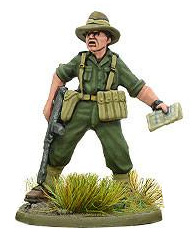
The other big risk is that, until your reserves turn up, you’re functionally playing with an under-strength army. While it can be tempting to go all-in with the sneaky off-table stuff, the last thing you want is to have to spend half the game trying to fight 1,000 points with 500! Remember, if you get ‘tabled’ with models still in reserve… it still counts as an instant defeat!
Remember, there’s nothing more dangerous than a junior officer with a map. I think I know a shortcut that’ll let us sneak up on them, lads…
